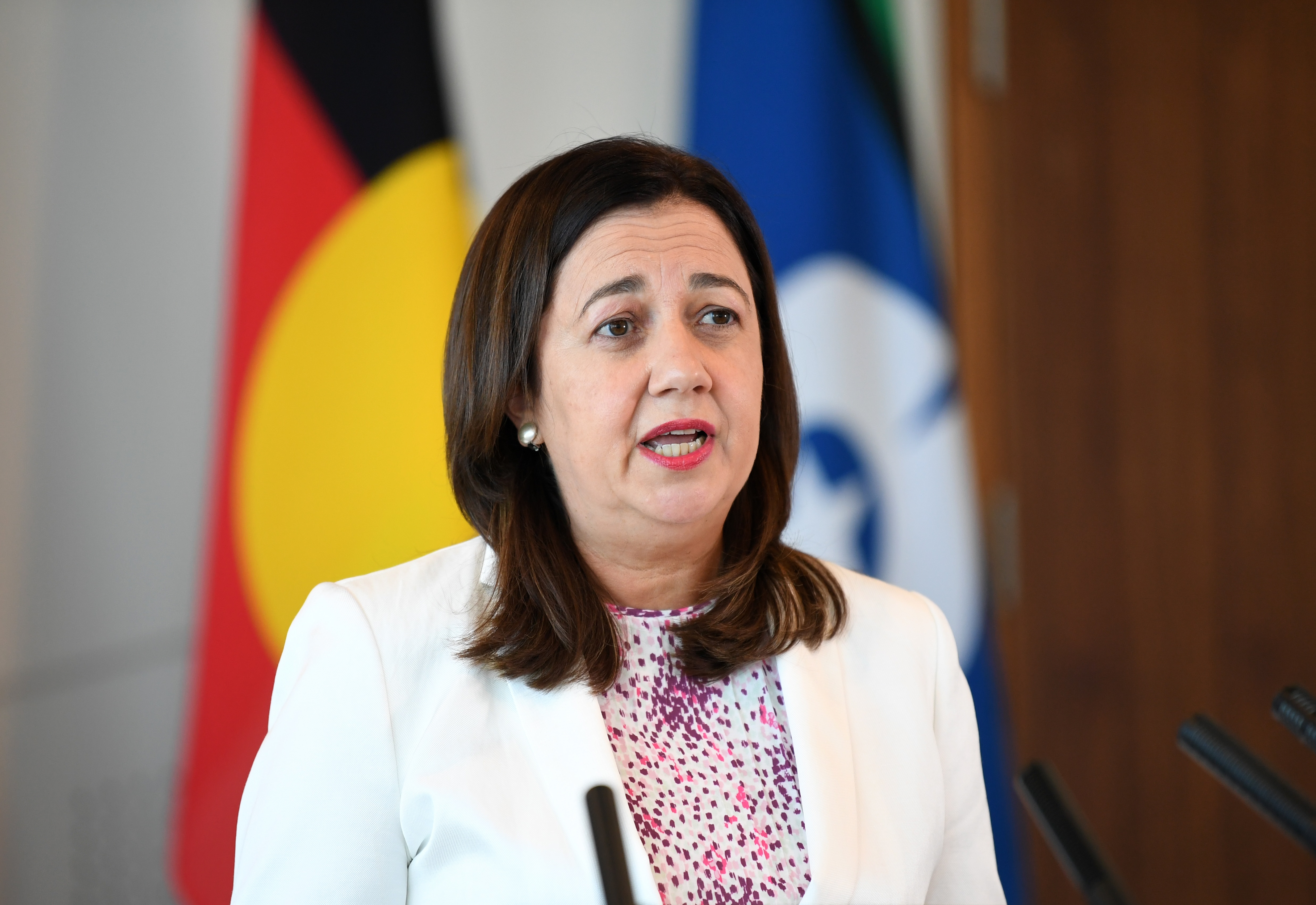Just days out before Christmas, state and territory leaders have rushed to impose new travel restrictions on travellers from Sydney’s Northern Beaches and Greater Sydney, where a coronavirus cluster is continuing to grow.
On Saturday, NSW Premier Gladys Berejiklian announced the Northern Beaches area of Sydney would re-enter lockdown from 5pm on Saturday until midnight on Wednesday.
“Essentially, we will be going back to the restrictions that were in place back in March, just for the local government area of the Northern Beaches,” she said.
The shock spike in cases has prompted new rules for Sydneysiders and NSW residents hoping to travel interstate for the holidays. Here’s what you need to know.
Victoria
Residents of Greater Sydney, including the Central Coast and the Blue Mountains, are banned from travelling to Victoria, with Premier Daniel Andrews declaring the entire region a ‘red zone’.
Returning Victorians were given until midnight on Monday to make the trip home, after which they need to self-isolate for 14 days at home.
Those arriving after this time will also be subjected to hotel quarantine arrangements.
Mr Andrews said the significant new step was a “difficult decision, but it is the appropriate decision”.
He said the border closures would remain in place for “as long as they needed to” and would not be lifted when the current Northern Beaches lockdown expires at midnight on Wednesday.
Under the traffic light system, all NSW regions outside of Greater Sydney have been designated a ‘green zone’, but residents will still need to apply for a permit to enter Victoria.
People already in Victoria who have been in the Northern Beaches on or since 11 December should isolate and get tested.
Queensland
Queensland health authorities have also announced the state is shutting its border to residents of Greater Sydney, after authorities labelled the entire city a hotspot.
Premier Annastacia Palaszczuk said on Monday afternoon that people had been caught trying to get into Queensland without quarantining, so the hard border with NSW would be back in place from 6am on Tuesday.
“If you are from Greater Sydney, now is not the time to travel to Queensland,” Ms Palaszczuk said on Sunday.
Queenslanders in the NSW capital had been given until 1am on Tuesday to get home, and must be tested for COVID-19 and go into self-isolation on arrival.
ACT
The ACT requires anyone coming from Sydney, the Central Coast and the Blue Mountains to enter quarantine for 14 days.
“If you are not an ACT resident and have been in any of these places, our message is simple … do not travel to the ACT,” the territory’s Chief Health Officer Kerryn Coleman told reporters on Sunday.
Anyone in the same household as the traveller will also be required to quarantine, she said.
Authorities will not be considering exemption requests for non-residents coming from these regions, except in extreme circumstances, Dr Coleman said.
“I do understand that this will be difficult for many people and we definitely don’t take these decisions lightly.
“While we will not have the restrictions in place any longer than we need to, we need the community to be prepared, this is likely to continue over Christmas and potentially into the New Year.”
ACT Health’s initial advice said the restrictions also covered people who had visited the Shoalhaven region in NSW, but authorities later clarified it would be unaffected.
Western Australia
Premier Mark McGowan has announced Western Australia has reinstated its hard border with all of NSW given the size of the Northern Beaches outbreak.
On Saturday, the state’s ‘low risk’ rating for NSW was upgraded to ‘medium risk’, meaning that it would reinstate the same strict measures seen earlier in the year.
The only people from NSW who will be able to fly into the state after 20 December will be those with special exemptions.
Mr McGowan said it was a “difficult decision” to make given the time of the year.
“I understand this will be devastating news for people looking to meet family for Christmas in NSW,” he said.
The Northern Territory
The Northern Territory has effectively shut its border to Greater Sydney travellers.
People from Sydney, the Blue Mountains, the Central Coast and Illawarra will be ordered into 14-day quarantine on arrival.
“We’ve said that our number one priority is to protect the lives of Territorians, and that if we had to, we would go hard, wide and early, and we’d act quickly. And today we have again,” acting Chief Minister Nicole Manison said on Sunday afternoon.
Tasmania
Health authorities have designated the Northern Beaches local government area a ‘high risk’ region, barring any people who have passed through there since 11 December from entering Tasmania unless they are an essential traveller.
The rest of Greater Sydney has been labelled ‘medium risk’, with anyone who is travelling from these areas required to quarantine for 14 days on arrival in Tasmania.
The Sydney to Hobart yacht race has been cancelled for the first time in its history, with organisers admitting the border restrictions made it impossible to stage.
South Australia
South Australia closed its border to Greater Sydney at midnight on Sunday and checkpoints have been set up to test people for COVID-19 at the NSW road border crossings and at Adelaide Airport.
All people from Greater Sydney have to undergo mandatory 14-day quarantine on arrival in SA, while anyone who has been in the Northern Beaches recently will be turned away unless they are a returning resident.
With additional reporting by AAP.
People in Australia must stay at least 1.5 metres away from others. Check your jurisdiction’s restrictions on gathering limits.
If you are experiencing cold or flu symptoms, stay home and arrange a test by calling your doctor or contact the Coronavirus Health Information Hotline on 1800 020 080.
News and information is available in 63 languages at sbs.com.au/coronavirus. Please check the relevant guidelines for your state or territory: NSW, Victoria, Queensland, Western Australia, South Australia, Northern Territory, ACT, Tasmania.







